
How To Manage Your Contacts as an Artist
Tutorial & Template
Please note that in this survey, we have opted to exclusively select artists whose medium—and most often also the subject matter or creative process—is predominantly marked by digital media. As a result, artists such as Damien Hirst and Ai Weiwei ranked very highly in the Artfacts artist’s ranking but playing a limited role in digital art have been excluded. Artists using digital media in their process and subject matter but not in the final artwork have also been excluded; think of the paintings by Miltos Manetas or the multidisciplinary practice of Jiang Zhi.
To conclude, please note that this list has been assembled using the Artfacts algorithm, ranking artists based on objective career facts and data such as institutional exhibitions, measuring their pertinence and relevance in today’s art world. By doing so, some of the best-known names in digital art, who earned their recognition during the heyday of NFTs, have not made the top twenty in the art world; think of Beeple or José Delbo. For further reading on digital art, we warmly recommend the reference publication by Christian Paul and published by Thames & Hudson Digital Art from the World of Art series.
Stepan Ryabchenko, born in 1987 in Odessa, Ukraine, is a prominent Ukrainian media artist and the chief curator at Art Laboratory. Currently residing in Odessa, Ryabchenko’s artistic oeuvre includes conceptual architecture, sculpture, and light installations. His work primarily investigates the intersection between the real and the virtual world, as well as exploring the evolving nature of art through the creation of a digital universe complete with its own heroes and mythology. He is particularly recognized for his monumental prints and video-art installations, which often feature non-existent entities such as Computer viruses, Electronic winds, and Virtual flowers. Ryabchenko consistently experiments with various art forms and technologies, with a special emphasis on innovative technology. His practice reflects the close link between art and science, a relationship that has grown tighter with the rapid technological advancements of recent decades. He views both disciplines as crucial tools for understanding the world, emphasizing that they share a need for openness, creativity, and a relentless pursuit of knowledge.
Notable solo exhibitions include presentations at Al-Tiba9 Gallery, Barcelona, Spain (2020); ACCO International, Kyiv, Ukraine (2018); Odessa Museum of Western and Eastern Art, Odessa, Ukraine (2017); and exhibited internationally, including the Ludwig Museum in Budapest, Saatchi Gallery in London, Krolikarnia in Warsaw, Museum of Contemporary Art in Zagreb and Danubiana Meulensteen Art Museum in Bratislava, Manege and Gostiny Dvor in Moscow, etc. His work features in various renowned collections, including Art Collection Telekom, Danubiana-Meulensteen Art Museum, M17 Contemporary Art Center, Odessa Fine Art Museum, the Museum of Odessa Modern Art, etc. As well as private collections, including Abramovych Foundation, Adamovskiy Foundation, Firtash Foundation, Grynyov Art Collection, Korban Art Foundation, Luciano Benetton Collection, Sky Art Foundation, Stedley Art Foundation, Triumph Gallery, Voronov Art Foundation, Zenko Foundation, etc.1
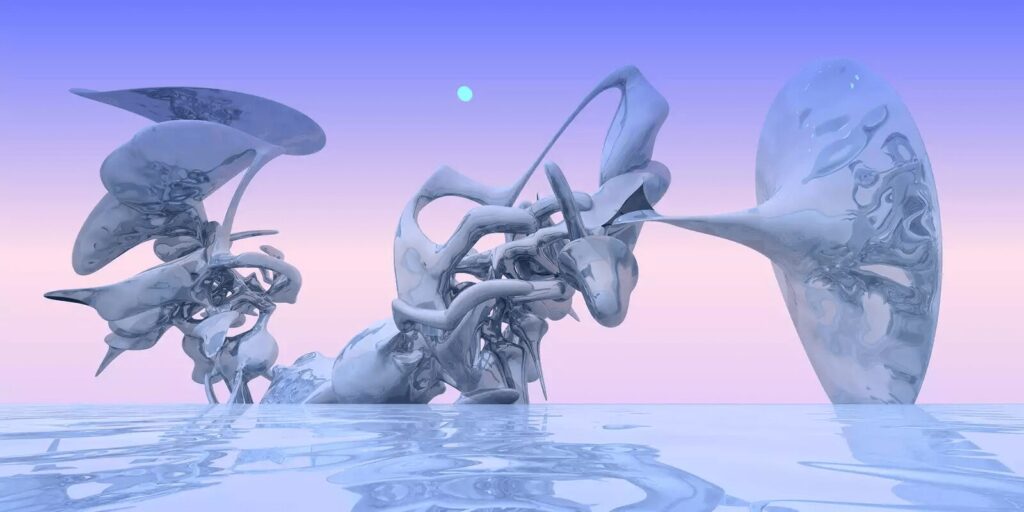
Born in 1972 in Norwich, United Kingdom, Alex May is a British contemporary artist based in Brighton. His work critically explores how contemporary technologies shape our perception of time, memory, and cultural narratives. May creates innovative links between art, science, and technology utilizing a broad array of digital new media. His techniques include virtual and augmented reality, photogrammetry, algorithmic photography, interactive robotic artworks, video projection mapping, generative works, as well as video and sound art.
May has an extensive international exhibition record. His works have been featured at prestigious venues such as Ars Electronica, LABoral in Spain, IMPAKT in the Netherlands, FACT in Liverpool, Furtherfield in London, WRO Media Art Biennale in Poland, HeK in Basel, The Francis Crick Institute, Bletchley Park, Eden Project, Science Gallery in Dublin and Bengaluru, ZHI Art Museum in China, and the Beall Center for Art + Technology at the University of California, Irvine.2
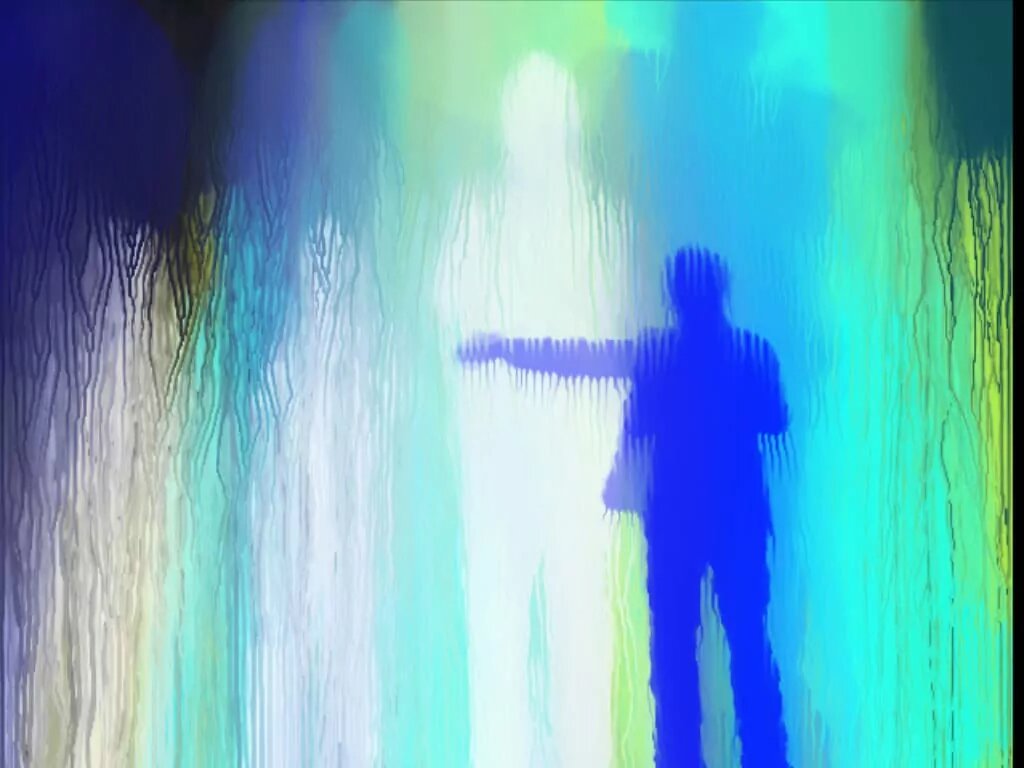
Miguel Chevalier, born in 1959 in Mexico City, has been a resident of Paris, France, since 1985. Chevalier has dedicated his artistic practice to computers since 1978, establishing himself as a pioneer in virtual and digital art on the international stage. Chevalier’s work is experimental and multidisciplinary, drawing on historical art references which he reinterprets using computer tools. His art addresses recurring themes such as nature and artifice, flows and networks, virtual cities, and ornate designs, offering deep insights into our relationship with the world. Beginning in the 1980s, Chevalier explored the concept of hybrid, generative, and interactive images. His projects have utilized various media, including generative and interactive virtual reality installations, projections on large scales, displays on LED and LCD screens, sculptures created with 3D printers or laser cutting, holographic imagery, and other innovative forms.
Chevalier’s installations and exhibitions have been displayed in museums, art centers, galleries, and public spaces worldwide, and he has received numerous commissions that integrate his art with architectural elements. His digital works are characterized by their constant metamorphosis, immersing viewers in a poetic, and distinctly contemporary universe. Notable solo exhibitions include presentations at the Ara Art Center in Seoul, Korea; the Centre Culturel Matadero in Madrid, Spain; the Maison des Arts in Bagneux, France; Musée de Gajac in Villeneuve-sur-Lot, France; the Jing An Kerry Center in Shanghai, China; and more.3
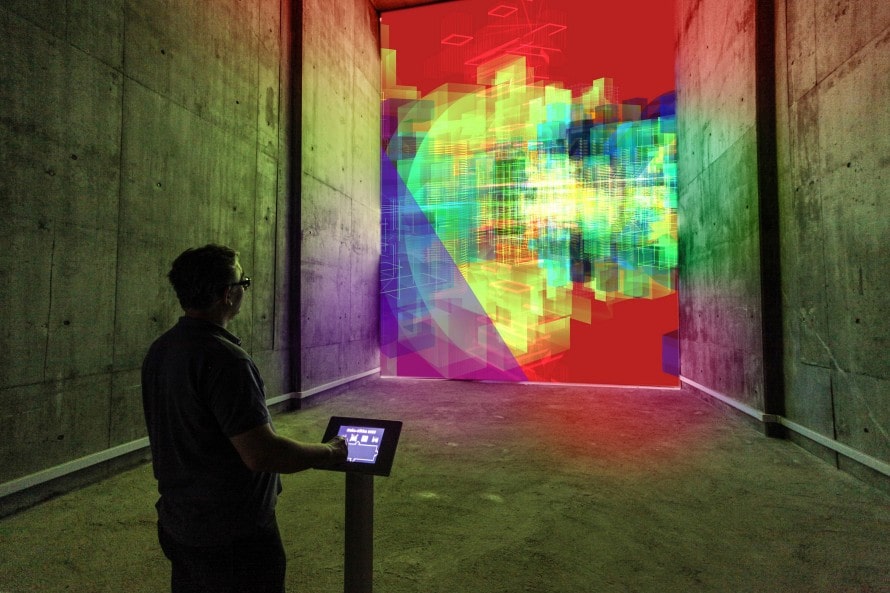
Ryoichi Kurokawa, born in 1978 in Japan, is an artist currently living and working in Berlin, Germany. His artistic practice encompasses installation works, recordings, and concert pieces, through which he composes what he describes as ‘time sculpture.’ He skillfully blends field recordings with digitally generated structures to architecturally reconstruct audiovisual phenomena, merging analog and digital materials to create immersive, multi-sensory experiences. Kurokawa’s work is deeply influenced by nature and the interaction between observed physical realities and electronically interpreted realities. He began experimenting with synesthesia in audiovisual installations in the 1990s, creating works that overlap the senses of sound, sight, and touch. Over the years, his innovative installations, video screenings, audio recordings, and performances have been showcased worldwide, melting multi-channel image and sound into continually evolving entities.
His works have been featured at major international venues and festivals including Tate Modern in the UK, Centre Pompidou in France, the Venice Biennale in Italy, Pinakothek der Moderne in Germany, Palais de Tokyo in France, Barbican Centre in the UK, ARS Electronica in Austria, Mutek across Canada, Mexico, Japan, and Spain, Tretyakov Gallery in Russia, Minsheng Art Museum in China, YCAM in Japan, EMPAC in the US, LABoral in Spain, FACT in the UK, Palais des Beaux-Arts in Belgium, National Taiwan Museum of Fine Arts, National Centre for Contemporary Arts in Russia, CTM/Transmediale in Germany, ACC in South Korea, Espace Culturel Louis Vuitton in France, and Sonar in Spain, the UK, and Japan. In 2010, Kurokawa was honored with the prestigious Golden Nica at Prix Ars Electronica in the Digital Musics & Sound Art category. His work continues to challenge and expand the boundaries of audiovisual art.4
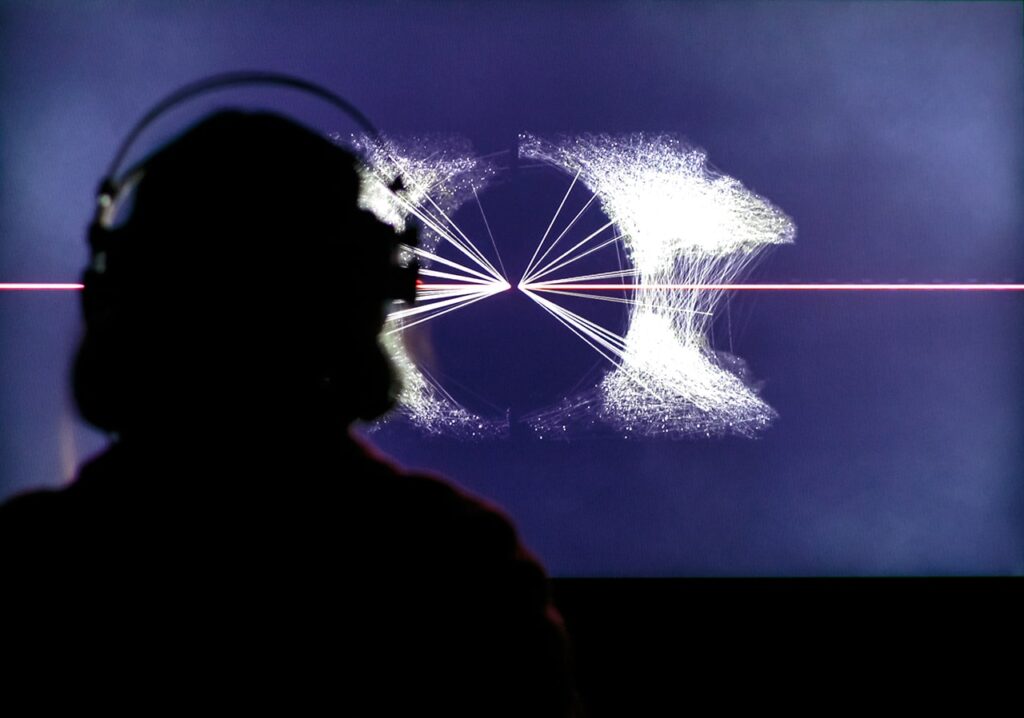
Lillian F. Schwartz, born in 1927 in Cincinnati, Ohio, is a pioneering American artist known for her groundbreaking work in computer graphics, film, video, and 3D animation. Her innovative approaches have influenced not only the art world but also the fields of gaming, special effects, and virtual reality. Schwartz was among the earliest to explore the potential of computer-mediated art, producing significant works before the widespread availability of computer technology to artists. She has played a crucial role in the recognition of computers as a legitimate medium for artistic expression, helping to pave the way for future generations of artists. Schwartz started engaging with computer technology at a time when there was significant skepticism among artists regarding its creative potential. Viewing the computer as a natural evolution of the artist’s toolbox, she embraced it despite prevalent attitudes that it was either a stifling commercial tool or a threat to the artist’s primary role due to its artificial intelligence capabilities. She maintains that while computers can learn, they lack the intrinsic capability to create, asserting the primacy of human creativity over mechanical output.
Her extensive body of work has been exhibited both nationally and internationally at prestigious institutions including The Metropolitan Museum of Art, The Museum of Modern Art, The Whitney Museum of American Art, The New Museum, and The Brooklyn Museum in New York; the Hirshhorn Museum and Sculpture Garden in Washington, D.C.; the Carnegie Institute in Pittsburgh; the High Museum of Art in Atlanta; the Indianapolis Museum of Art; the San Francisco County Museum of Art; and internationally at the Institute of Contemporary Arts in London, Centre Georges Pompidou in Paris, Grand Palais in Paris, and Stedelijk Museum in Amsterdam. Recent exhibitions include “Electronic Superhighway” at Whitechapel Gallery in London; “Digital Revolution” at The Barbican Centre in London; “Shifting Optics II” at Upstream Gallery in Amsterdam; and “The Ghost in the Machine” at The New Museum in New York. Her films continue to be featured in festivals and venues globally, affirming her status as a vital figure in both the historical and contemporary art scenes.5
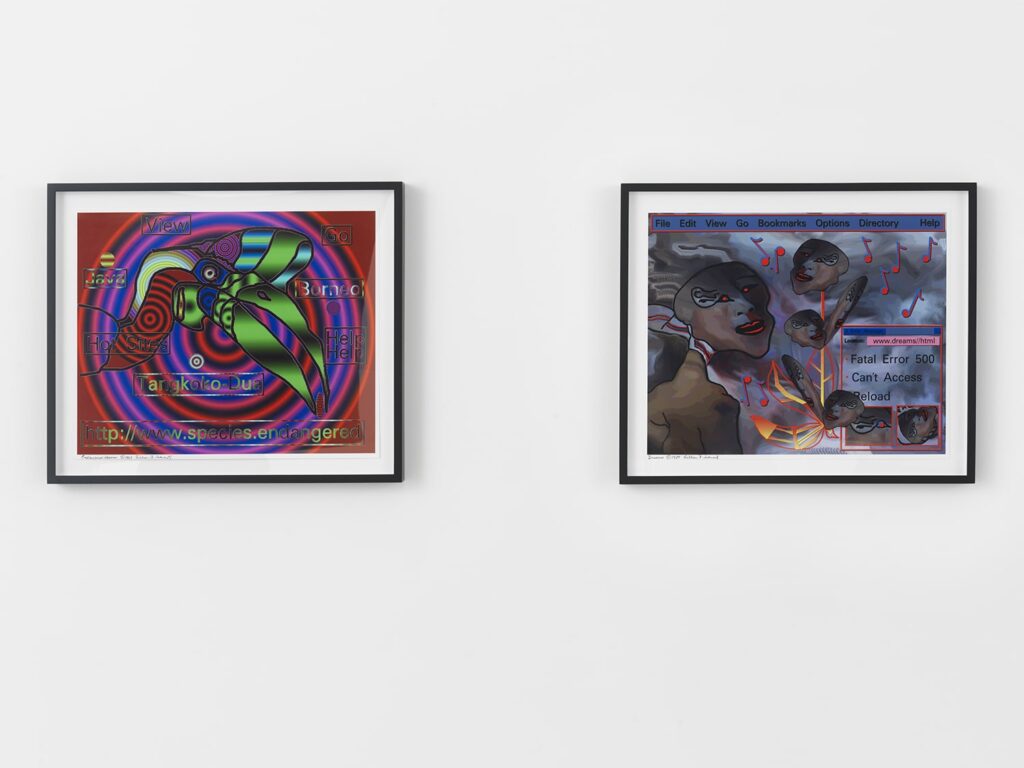
Born in 1962 in New York, where she continues to reside and work, Marina Zurkow is a media artist renowned for exploring the intersections of nature and culture. Her practice involves the use of diverse materials and technologies, including life sciences, food, software, animation, clay, and other biomaterials. Zurkow aims to create intimate connections between people and non-human entities through her art. Marina Zurkow’s portfolio includes gallery installations as well as innovative public participatory projects. Presently, she is focusing on projects that link toxic urban waterways to oceans. Her research explores the complexities of maritime ecology and the ocean’s predominant use in global capitalism, exploring the dynamics and tensions involved.
Zurkow has held several solo exhibitions at notable venues such as bitforms gallery in New York, Chronus Art Center in Shanghai, Montclair Art Museum in New Jersey, and Diverseworks in Houston. Additionally, her work has been featured in significant institutions including the FACT in Liverpool, San Francisco Museum of Modern Art, Walker Art Center in Minneapolis, Smithsonian American Art Museum in Washington D.C., Museum of Fine Arts in Houston, and the National Museum for Women in the Arts in Washington D.C. Zurkow’s public art projects have received support from various organizations, including Creative Time in New York, LACE in Los Angeles, Montclair Art Museum in New Jersey, The New Museum’s Ideas City in New York, Northern Lights.mn in Minneapolis, The Artist’s Institute in New York, and Rice University in Houston. She has been recognized as a John Simon Guggenheim Memorial Fellow and has received awards from the New York Foundation for the Arts, New York State Council for the Arts, the Rockefeller Foundation, and Creative Capital.6

UBERMORGEN is an artist duo founded in 1995 in Vienna, Austria, working and residing between Vienna and St. Moritz, Austria, by lizvlx and Hans Bernhard. lizvlx, born in 1973, is an Austrian net artist engaged in digital imagery, media actionism, and programming. Hans Bernhard, also born in 1973, is a Swiss-American writer, actionist, and digital artist specializing in media hacking, text modification, conceptual art, and net.art. Known for their unique and controversial presence within the European techno-fine-art avant-garde, their work spans conceptual art, software art, pixel painting, computer installations, net.art, sculpture, and digital activism, including media hacking. Their multifaceted approach transforms their brand into a hybrid Gesamtkunstwerk, utilizing computers and networks to blend various art forms. The duo emphasizes the fluidity between fact and fiction, expanding the materials of their creative process to include elements like international rights, democracy, and global communication.
The works of UBERMORGEN have been showcased in prestigious exhibitions around the world and across digital platforms. Notable venues include the Liverpool Biennial, Whitney Museum, MoMA PS1, Centre Pompidou, Gwangju Biennale, Louvre Paris, Biennale of Sydney, KW Institute for Contemporary Art, SFMOMA, MOCA Taipei, ICA Miami, The National Museum of China, Serpentine Galleries, Kunsthal Aarhus, Chronus Shanghai, Museo Reina Sofia, New Museum, Somerset House, Haifa Museum of Art, The Hermitage Museum in St. Petersburg, Wei-Ling Kuala Lumpur, HKW Berlin, ZKM, HMKV, National Art Gallery Sofia, Ars Electronica, The Bogotá Museum of Modern Art, ArtScience Singapore, 3331 Tokyo, WRO Media Art Biennale, Prague Biennale, and ICC Tokyo.7
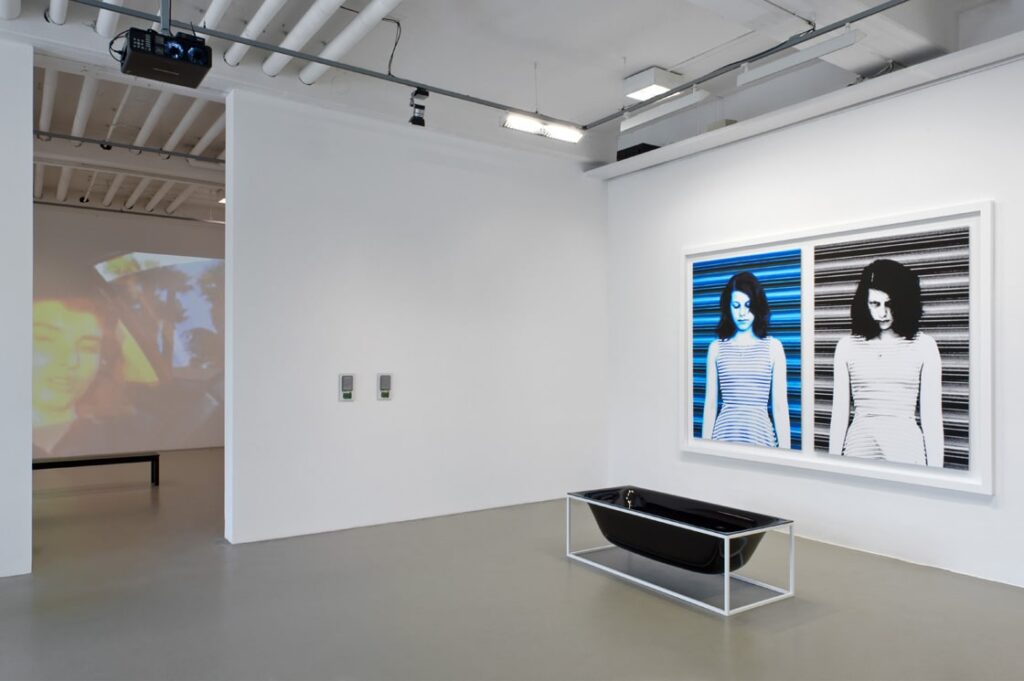
Claudia Larcher, born in 1979 in Bregenz, Austria, is a contemporary artist living and working in Vienna, Austria. Larcher’s body of work encompasses video animation, collage, photography, and installation, with a critical integration of artificial intelligence used as an experimental tool in her artistic process. From digital still-life prints to interactive multi-media installations, Larcher defies categorization and continues to explore the possibilities of the digital formally and conceptually.
Her work has been featured in numerous exhibitions both in Austria and internationally, with presentations at notable venues such as the Tokyo Wonder Site in Japan, the Slought Foundation in Philadelphia, the Weimar Art Festival, Centre Pompidou in Paris, Ars Electronica Festival in Linz, the Museum of Contemporary Art in Roskilde, Manifesta 13, and the Anthology Film Archives in New York City. Larcher has been recognized with several prestigious awards throughout her career. These accolades include the Kunsthalle Wien Prize, the Outstanding Artist Award, the Vorarlberg Art Award, the Prof. Hilde Goldschmidt Award, and the Austrian Art Award. Her contributions to contemporary art are distinguished by her innovative use of technology and multimedia, exploring complex themes through a multidisciplinary approach.8
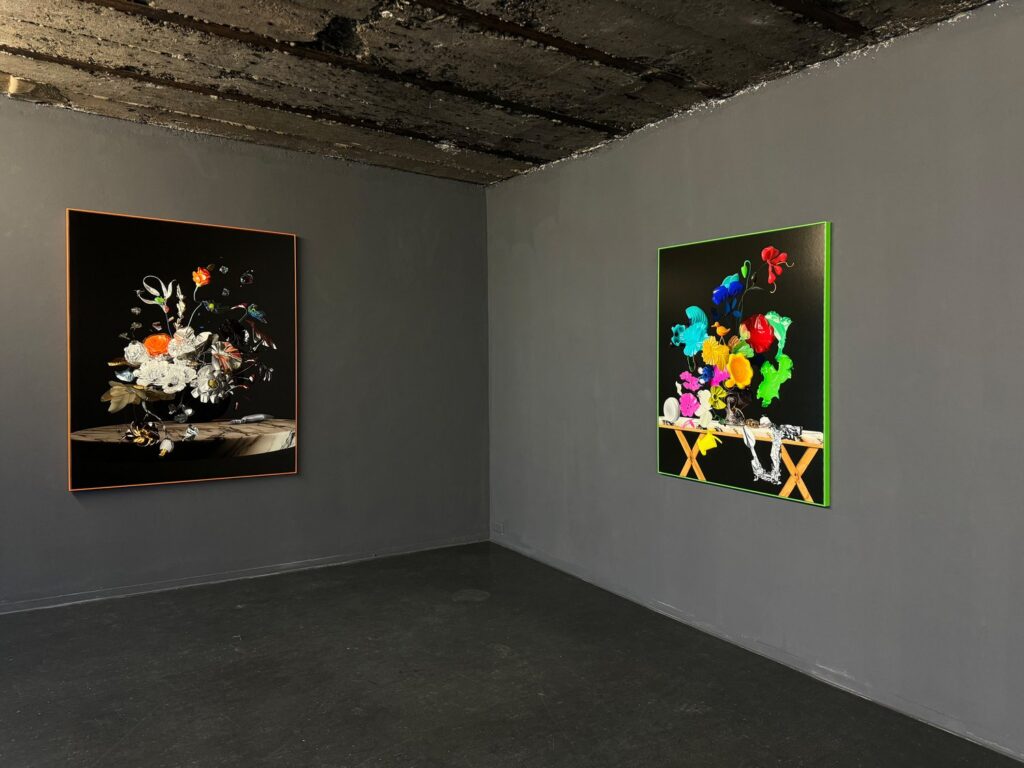
UK artist duo Ruth Jarman and Joe Gerhardt, known collectively as Semiconductor, have been pioneering the integration of art, science, and technology for over 25 years. Based in the UK, their work delves into the human experience at the intersection of these fields, presenting the natural world’s ephemeral nature through scientific data translated into sculpture, moving images, and drawings. Their art invites viewers to rethink their perceptions of reality and consider their role as observers within it. Semiconductor is recognized for its meticulous research and unique technological approaches tailored to each project. They often spend extended periods in renowned science laboratories worldwide, including CERN in Geneva, the NASA Space Sciences Laboratory at UC Berkeley, the Mineral Sciences Laboratory at the Smithsonian National Museum of Natural History, the Extreme Light Laboratory at the University of Glasgow, and the Charles Darwin Research Station in the Galapagos.
Their work has been exhibited internationally, with notable exhibitions at venues such as the New Media Gallery in Vancouver, Canada; Schafhof Gallery in Freising, Germany; John Hansard Gallery in Southampton, UK; the National Center of Contemporary Arts in Santiago, Chile; City Gallery in Wellington, New Zealand; CCCB in Barcelona, Spain; and the Art Basel in Switzerland, among others. Their contributions have been recognized in solo shows across the globe, including “The Technological Sublime” and “HALO,” highlighting their ability to blend scientific inquiry with artistic expression. Semiconductor’s works are included in prestigious collections such as the Hirshhorn Museum in Washington D.C., the Centre Pompidou in Paris, the Sorigué Foundation in Spain, Audemars Piguet in Switzerland, and the University of Dundee Art Collection, as well as various private collections. Their innovative approach continues to push the boundaries of how art can engage with and represent scientific phenomena.9

teamLab, founded in 2001 by Toshiyuki Inoko, is an international art collective based in Tokyo. This interdisciplinary group comprises a diverse range of specialists, including artists, programmers, engineers, CG animators, mathematicians, and architects. Their work explores the convergence of art, science, technology, and the natural world, aiming to understand and redefine the boundaries perceived in our environment. The collective’s goal is to challenge and expand the conventional perceptions of the relationship between the self and the world, advocating for a view of existence as part of a continuous, interconnected spectrum without clear boundaries. This philosophy guides their dynamic installations and digital works, which aim to dissolve the distinctions traditionally recognized between different entities and emphasize a cohesive continuity in time and space.
teamLab has presented exhibitions globally in cities such as New York, London, Paris, Singapore, Silicon Valley, Beijing, and Melbourne. They have established permanent installations at museums, including teamLab Borderless and teamLab Planets in Tokyo, teamLab Borderless Shanghai, and teamLab SuperNature Macao. Plans for new permanent exhibitions are underway in cities including Abu Dhabi, Beijing, Hamburg, Jeddah, and Utrecht. The collective’s innovative works are part of the permanent collections of several prestigious institutions worldwide, including the Museum of Contemporary Art in Los Angeles, the Art Gallery of New South Wales in Sydney, the Art Gallery of South Australia in Adelaide, the Asian Art Museum in San Francisco, Asia Society Museum in New York, Borusan Contemporary Art Collection in Istanbul, National Gallery of Victoria in Melbourne, and Amos Rex in Helsinki.10
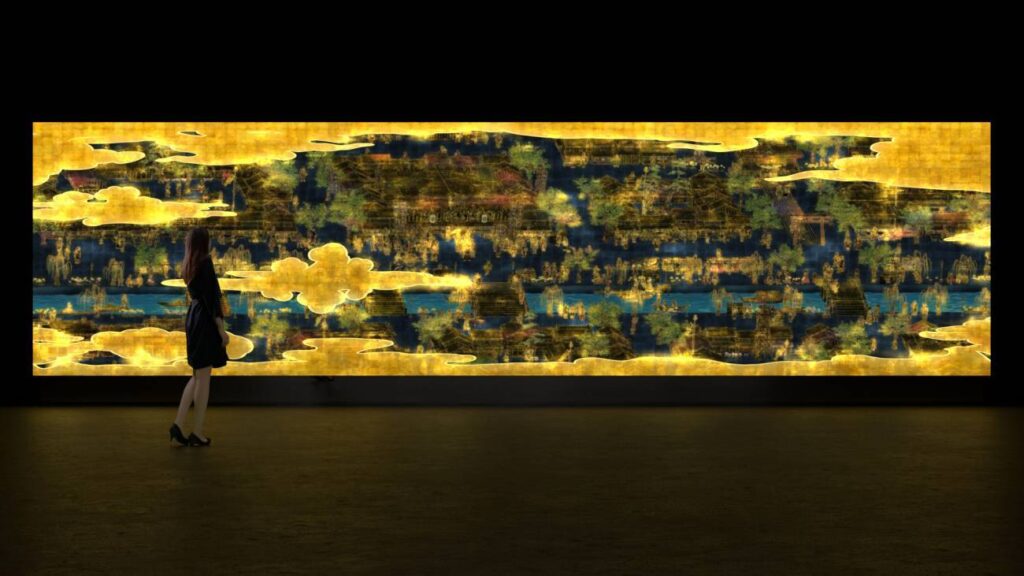
Tamiko Thiel, born in 1957 in Oakland, California, the United States of America, working and residing in Munich, Germany, is an American artist renowned for her digital and augmented reality (AR) art. Thiel’s work delves into themes such as the interplay of place, space, the body, and cultural identity. Her diverse portfolio spans artificial intelligence (AI) supercomputers, objects, installations, digital prints in both 2D and 3D, videos, interactive 3D virtual worlds (VR), AR, and AI art. Over the past 15 years, Thiel has concentrated on creating site-specific virtual reality installations at various institutions across the globe. A pioneer in her field, Thiel is a founding member of Manifest.AR; an artist collective that uses augmented reality to create spontaneous interventions in places such as the Corcoran Gallery of Art, Tate Modern, the Venice Biennial, and the Museum of Modern Art in New York City.
Her works have been exhibited at notable international venues, including the International Center of Photography, the Institute of Contemporary Art in Boston, the Corcoran Gallery of Art, ZKM Center for Art and Media Karlsruhe, the Tokyo Metropolitan Museum of Photography, Fondazione Querini Stampalia, Ars Electronica, and at events such as SIGGRAPH and ISEA International. Thiel frequently employs AR to overlay her digital creations onto real-world locations such as the New York Stock Exchange, the Tate Museum in London, New York’s Museum of Modern Art, the Berlin Wall, and Piazza San Marco in Venice. Her influential works are part of several permanent collections, including those at the Museum of Modern Art in New York and the San Jose Museum of Art.11
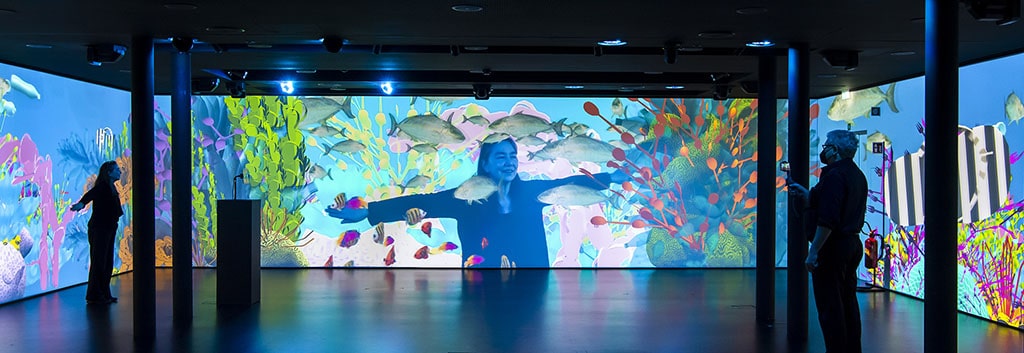
Justine Emard, born in 1987, is a visual artist who lives and works in Paris, France. Emard’s work investigates the evolving interactions between human existence and technologies, situating her creations at the nexus of neurosciences, objects, organic life, and artificial intelligence. Her artistic practice employs a variety of image media, including photography, video, and virtual reality.
Her work has been featured in prominent international venues such as the NRW Forum in Dusseldorf, the National Museum of Singapore, the Moscow Museum of Modern Art, Itaú Cultural Institute in São Paulo, the Cinémathèque Québécoise in Montréal, the Mori Art Museum and MOT Museum of Contemporary Art Tokyo in Japan, the Irish Museum of Modern Art in Dublin, the Barbican Center in London, the World Museum in Liverpool, the Fondation Pernod Ricard and the CNES – national center for space studies in Paris, the Louvre in Lens, and the ZKM – Center for Art and Media in Karlsruhe. Emard has participated in numerous international biennales, including the Moscow Biennale of Contemporary Art in Russia, the Tongyong Triennale in South Korea, the Karachi Biennale in Pakistan, and the Chengdu Biennale in China.12
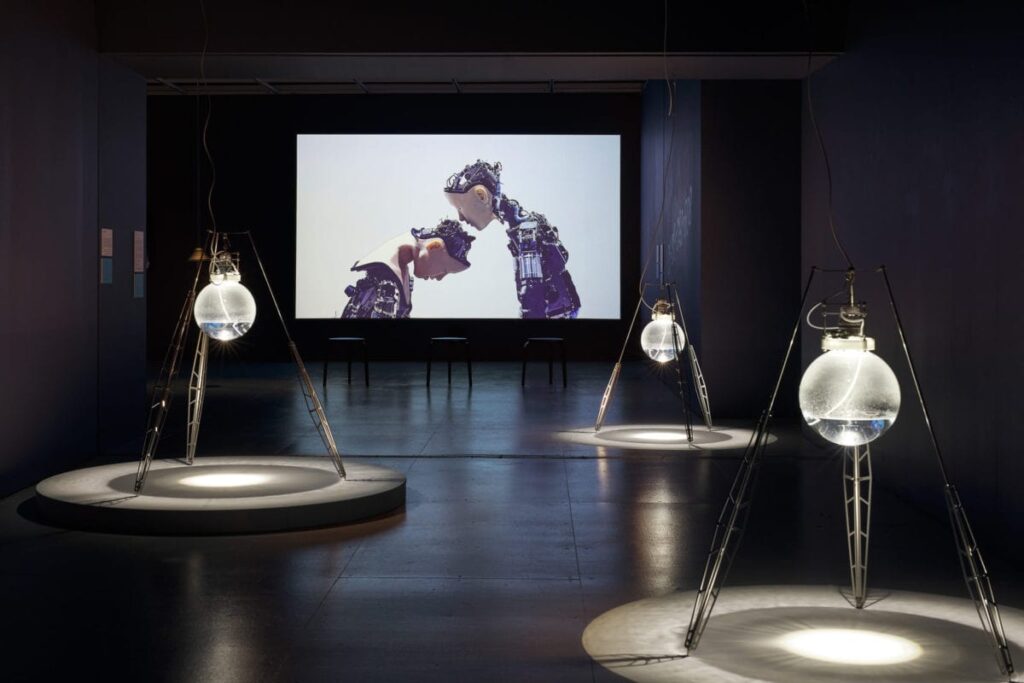
Friedemann Banz, born in 1980, and Giulia Bowinkel, born in 1983, both in Germany, form the artist duo known as Banz & Bowinkel. They currently reside in Germany and focus their artistic practice on exploring the intersection between virtual and real spaces. Their work reflects on how the separation between these spaces is diminishing due to technological advancements, utilizing computer-generated imagery, interactive virtual reality installations, and augmented sculptures. Computers, serving both as a tool and a material in their creation process, enable them to investigate human interactions with technology and the changing dynamics it introduces into society. Banz & Bowinkel’s projects often confront the binary nature of digital realities and how, increasingly, computer monitors act as windows to the world. Their work critically examines the implications of the deepening relationship between humans and machines, questioning how this integration alters our perception of reality.
Their innovative and award-winning creations have been displayed in prestigious venues such as the Museum Abteiberg in Mönchengladbach, Haus Esters/Haus Lange, Kaiser Wilhelm Museum in Krefeld, Haus der Elektronischen Künste in Basel, Halle für Kunst & Medien in Graz, Zeppelin Museum in Friedrichshafen, and the NRW-Kunstforum in Düsseldorf. The works of Banz & Bowinkel are also held in notable collections including the Kaiser Wilhelm Museum, Museum Kunstpalast, and Kunsthaus NRW.13

Charlotte Johannesson—born in 1943 in Malmö, Sweden, currently resides and works in Skanör, Sweden—is recognized as a pioneering figure in the integration of textile arts and digital graphics in contemporary art. Johannesson’s artistic practice spans weaving, painting, digital printing, and digital slideshows, reflecting her continuous exploration of the formal and conceptual links between craft technology and digital technology. Her work critically addresses image-making processes and promotes the synchronicity between material and digital production. As a trained weaver, Johannesson began producing tapestries that often satirized mainstream politics during the 1970s. In 1978, with support from The National Swedish Board for Technology and Development, she co-founded the Digital Theatre in Malmö with her partner, Sture Johannesson. This facility, Scandinavia’s first digital arts laboratory, served as a pioneering independent platform for artistic and research projects, equipped with advanced technology, including multiple Apple computers, printers, monitors, and synthesizers.
Charlotte Johannesson has held several notable solo exhibitions, including “Save as art?” at Kunsthalle Friart Fribourg and Nottingham Contemporary in 2023; “ALL LINED UP” at Badischer Kunstverein in Karlsruhe, Germany, and “Circuit” at Hollybush Gardens in London, both in 2022; and “Take Me To Another World” at Museo Reina Sofia in Madrid, curated by Mats Stjernstedt and Lars Bang Larsen in 2021. Her work has also been featured in major international exhibitions such as the 59th International Art Exhibition of La Biennale di Venezia, Venice, Italy, and “The future looms” at Emanuel Layr in Vienna, Austria, both in 2022, among others. Johannesson’s art is included in prestigious public collections such as the Centre Pompidou in Paris, Moderna Museet in Stockholm, Moderna Museet in Malmö, and Museum Ludwig in Cologne, reflecting her significant impact and recognition in the field of contemporary art.14

Tim Berresheim, born in 1975 in Heinsberg, Germany, and currently residing and working in Aachen, Germany, is widely recognized as a pioneer of computer-based art, integrating digital and analog methods to create complex image-worlds that intertwine references from art history, technology, science, and nature. His oeuvre spans drawings, paintings, interactive digital media projections, and sculptures. This approach, which he describes as “artistic contemporary archaeology,” challenges conventional perceptions of reality and imbues digital art with a sense of life or soul. Throughout his career, Berresheim’s work has explored the shifting boundaries between actuality and virtuality, focusing on the transformative effects of digital technology on human perception and interaction.
Berresheim has exhibited widely, with notable recent exhibitions including “New Old World” at the NRW Forum in Düsseldorf, Germany (2024); “The Cicerone and the Phoenix” at Galerie Elisabeth and Reinhard Hauff in Stuttgart, Germany (2023); and “Caverna” at Augen & Welt in Aachen, Germany (2023). His work has been featured in a variety of international venues and is part of significant public collections such as the Sammlung zeitgenössischer Kunst der Bundesrepublik Deutschland; MoMA Collection, New York; Frederick R. Weisman Art Foundation, Los Angeles; and Kunstmuseum Stuttgart, among others.15
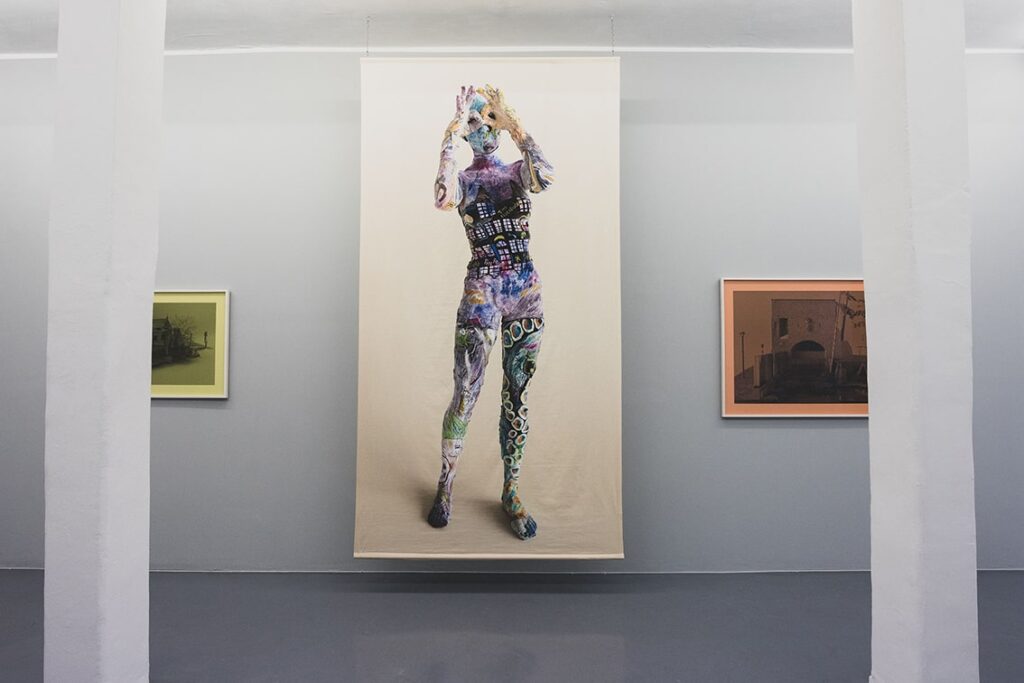
Tishan Hsu was born in 1951 in Boston, Massachusetts, and currently resides in New York, where he has lived since 1979. Hsu’s work is renowned for addressing the evolving cognitive and physical effects of technology on the human condition. Arguably best known for his playful and futuristic panels with rounded corners, rather than focusing on specific technological devices, his art examines the perceptions and impacts of technological presence through a variety of mediums, including drawings, paintings, interactive digital media projections, and sculpture. His art explores the relationship between the human body and technology, particularly the emotional interactions between people and digital screens. Hsu’s work encourages viewers to consider the personal and collective influence of technology, enhancing awareness of both cognitive responses and physical interactions in an increasingly digital environment.
His career has featured extensive exhibitions across the United States, Europe, Mexico, and Asia since his debut in New York at the Pat Hearn Gallery in 1985. His works are part of numerous prominent public and private collections including the Metropolitan Museum in New York, Centre Pompidou in Paris, and the Museum fur Moderne Kunst in Frankfurt am Main. His significant recent exhibitions include “Tishan Hsu: Liquid Circuit” from 2020 to 2021, a survey covering his work from 1982 to 2002, initially at the Hammer Museum in Los Angeles and later at the SculptureCenter in New York. Additionally, his work is featured in the 58th Carnegie International and the 58th International Art Exhibition at the Venice Biennale, curated by Cecilia Alemani. He also participated in the 13th Gwangju Biennale in 2021.16
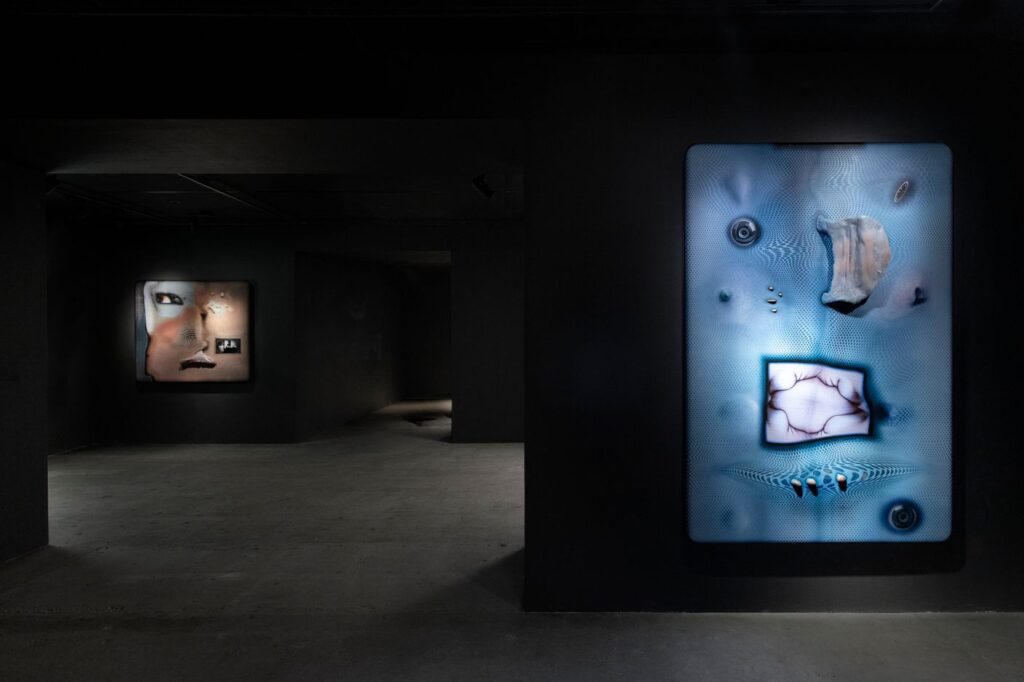
Daniel García Andújar, born in 1966 in Alicante, Spain, where the artist continues to work and reside, is a multimedia artist, activist, and theorist who navigates the dichotomies between the physical and virtual realms, the city and digital networks, scrutinizing the inequalities that emerge from ongoing social and hegemonic negotiations. His works incorporate reflections on the organization of knowledge and critically examine the divide created by the extensive use of the internet and information technologies, highlighting the disconnection between users and the digital world. Through his diverse artistic output, García Andújar explores how digital tools have transformed everyday experiences, employing irony and mass media tactics to challenge the purported democratization of information and spotlight the growing inequalities that stem from technology used in modern society.
Daniel G. Andújar has exhibited his projects globally at prestigious venues such as the Venice Biennial, Manifesta, the Helsinki Biennial for Photography, and the Kiev Biennial. In 2017, he participated in Documenta14 in Kassel and Athens, and in 2015, the Museo Nacional Centro de Arte Reina Sofia in Madrid featured a retrospective of his work curated by Manuel Borja-Villel. He has also led workshops and seminars internationally. His works are held in the collections of major institutions like the Museo Reina Sofia, IVAM in Valencia, MACBA in Barcelona, CA2M in Madrid, Artium in Vitoria, and Les Abattoirs in Toulouse, among others.17

Louisa Clement was born in 1987 in Bonn, Germany, where she currently resides and works. She completed her education at Kunstakademie Düsseldorf in 2014, graduating as a master’s student under Andreas Gursky. Clement’s artistic practice explores the evolving concept of identity in the context of new communication methods, standardization, and recognition brought about by the digital age. Utilizing a diverse range of media, including photography, video, sculpture, installation, and virtual reality, she investigates the nature of physicality and collective interaction in an era dominated by virtual influences. Beyond the themes of corporeality and identity, Clement’s art also delves into issues of control and authority. Her depiction of enigmatic, seductive humanoids raises questions about body integrity and the profound impact of technology on human thought and desire.
Clement has participated in numerous exhibitions across various institutions and museums, including the Marta Herford Museum in Germany (2020); the Triennial for Photography and New Media at Henie Onstad Kunstsenter in Norway (2020); Ludwig Forum in Aachen, Germany (2019); Sprengel Museum in Hannover, Germany (2019); and Kunst Raum Riehen in Switzerland (2018), among others. Her works are included in several prominent collections, such as Huis Marseille in Amsterdam, the Atlanta Kulturstiftung in Bad Homburg, Germany, the Collection of the City of Bruhl, Germany, and the Collection Ringier in Zurich, Switzerland.18
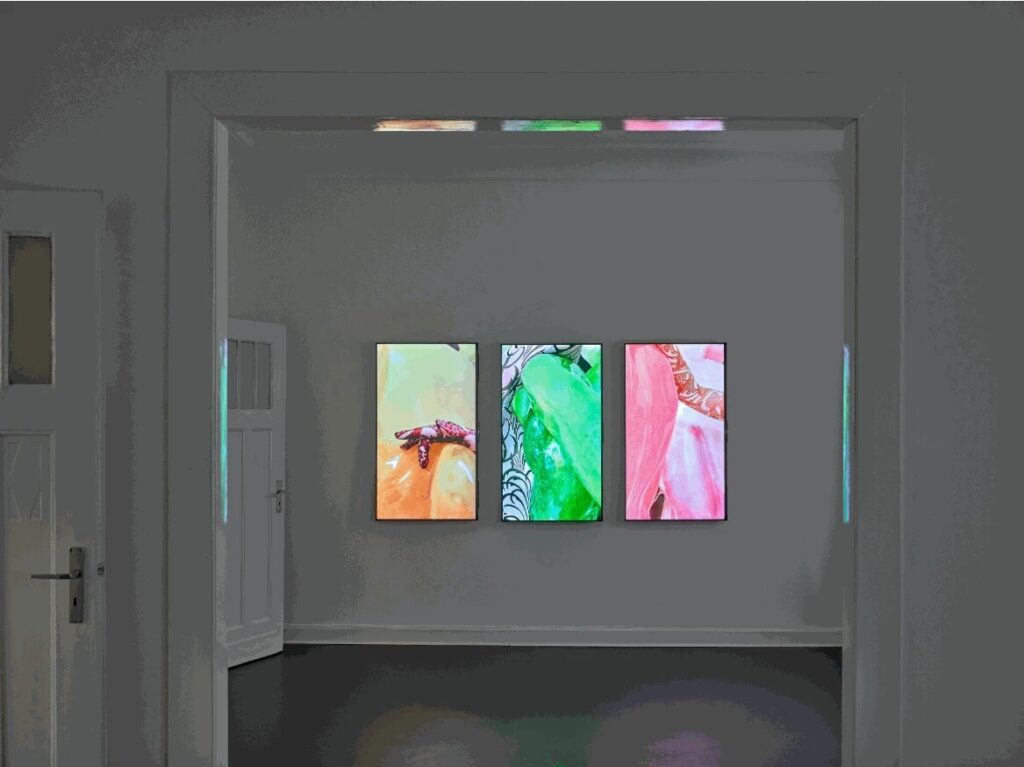
Born in 1974 in North Tipperary, Ireland, John Gerrard’s work reflects a nuanced understanding of complex subjects through digital media. In an era where simulations influence facets of life, from leisure to warfare, Gerrard uses the technologies that drive these systems to create his artworks. His pieces function as digital portraits of our world, crafted through the very software that supports entertainment, industry, and military endeavors. Gerrard employs a sophisticated method of trans-historical collage that layers terrain, figures, and gestures. This data is sourced from real bodies and locations using tools like satellite imagery, extensive photographic documentation, 3D scanning, and motion capture. The artworks that emerge from this process are virtual sculptures set within algorithmically driven environments. These settings feature complex choreographies, multiple perspectives, and realistic cycles of day and night that progress in real-time throughout the year.
John Gerrard’s work is prominently featured in the 2022 Biennale of Sydney. He has also participated in the Gwangju Biennale and the Thailand Biennial, both in 2021. In 2019, his art was showcased at the Okayama Art Summit in Japan. Gerrard has been honored with solo exhibitions at notable institutions such as the Los Angeles County Museum of Art, the Museo Nacional Thyssen-Bornemisza in Madrid, the Ullens Centre for Contemporary Art in Beijing, and the Hirshhorn Museum and Sculpture Garden in Washington, D.C., among other international locations. His works are included in the collections of several major institutions worldwide, such as the Museum of Modern Art in New York, the Los Angeles County Museum of Art, Tate in London, and the Pinault Collection in Paris.19
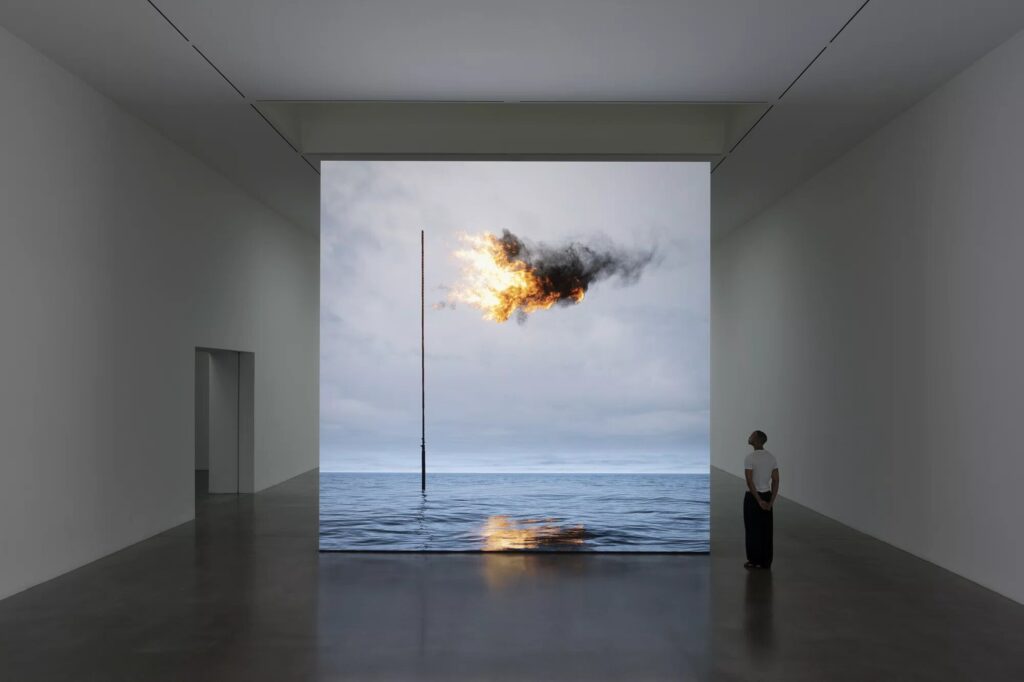
Refik Anadol was born in 1985 in Istanbul, Turkey, and currently resides in Los Angeles, California, USA. He earned his Master of Fine Arts from the Department of Design Media Arts at UCLA. As a new media artist, director, and leading figure in the utilization of data and machine intelligence aesthetics, Anadol explores the creative potential at the intersection of humans and machines. His innovative approach uses data and AI as primary elements, transforming them into dynamic visualizations that challenge our perceptions of architecture and the human form in motion. Through site-specific artificial intelligence data sculptures, live audio and visual performances, or immersive installations, Anadol not only shifts how we interact with the physical world but also enhances our understanding of its temporal and spatial dimensions.
Anadol’s installations and performances have been featured globally at prestigious venues and events. These include the Museum of Modern Art in New York City, USA (2022-2023); Venice Architecture Biennale in Venice, Italy (2021); National Gallery of Victoria 2020 Triennal in Melbourne, Australia; MUTEK in Montreal, Canada; Centre Pompidou in Paris, France (all 2020); National Museum of China in Beijing (2019); Fotografiska in Stockholm, Sweden; and ZKM in Karlsruhe, Germany (2019, 2018). His work has also been part of the Istanbul Biennial in Turkey (2015) and earlier exhibitions at the Marta Herford Museum in Germany (2010) and the Contemporary Art Center in Turkey (2008). Throughout his career, Anadol has received several accolades, including the Lorenzo il Magnifico Lifetime Achievement Award for New Media Art (2019), the German Design Award (2017), and Microsoft Research’s Best Vision Award (2013), among others.20
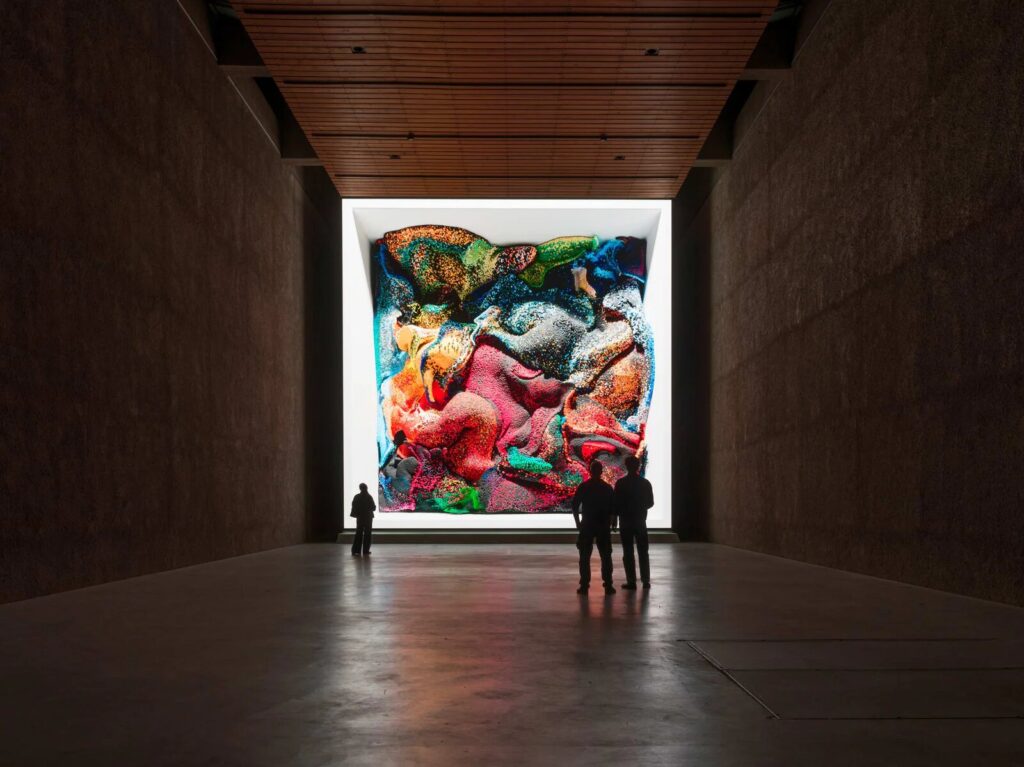
Notes:
Last Updated on April 20, 2024

Tutorial & Template
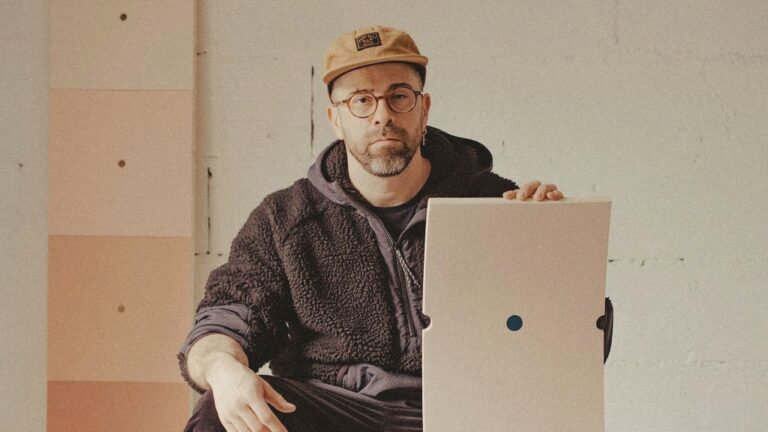
A Studio Visit During the La BIBI Residency